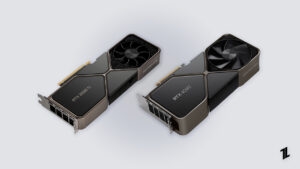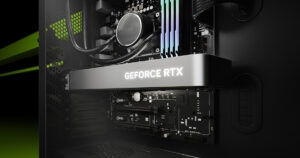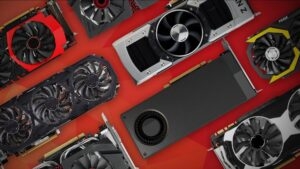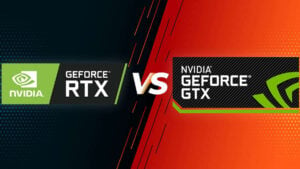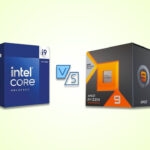Highlights
- Radeon RX 7900 XTX offers remarkable performance at nearly half the price compared to Nvidia’s GeForce RTX 4090.
- AMD struggles with ray tracing, lagging behind Nvidia’s RTX 4090 across various resolutions, impacting the immersive graphical experience.
- Consider your gaming priorities, budget, and resolution preferences when choosing between AMD’s Radeon RX 7900 XTX and Nvidia’s GeForce RTX 4090.
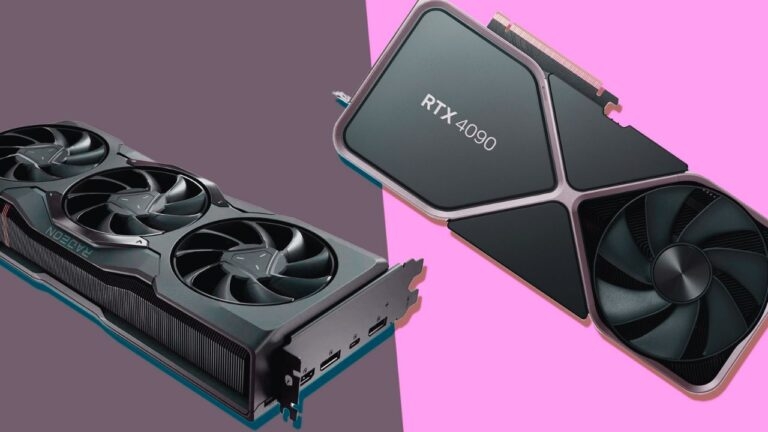
With graphics cards being in a continuous state of evolution, gamers are constantly in search of an appropriate balance between performance and price. Two powerful GPUs are highlighted in this article: AMD’s RX 7900 XTX Radeon and Nvidia’s GeForce RTX 4090.
I will be evaluating their ray tracing capabilities, performance metrics in various types of games, and scale-up technologies in detail that will enable you to make a decision regarding which among them to buy based on your set-up.
Head-to-Head Showdown: Radeon RX 7900 XTX vs. GeForce RTX 4090
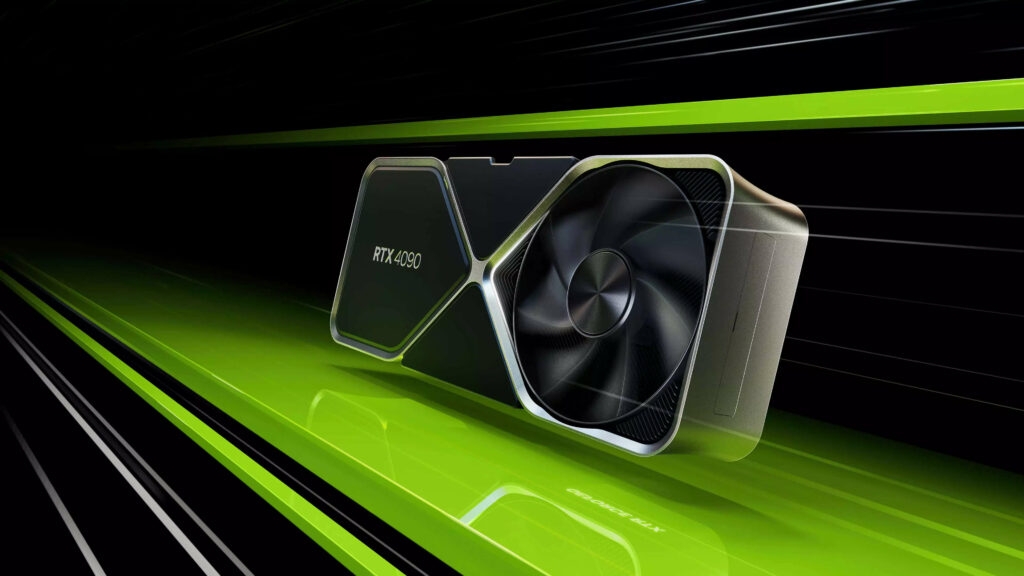
The Price Conundrum: Value vs. Raw Power
Let’s go to the main point and that is the price. The RTX 4090 talks about its exceptional performance, while it costs about $2,000. On the flipside, the 7900 XTX stands out as a cheaper choice, being at a price that is nearly half as much.
In today’s graphics card world, gamers are constantly looking for an equilibrium between cost and performance, which is very dynamic. Two powerful GPUs are highlighted in this article: AMD’s Radeon RX 7900 XTX and Nvidia’s GeForce RTX 4090.
We’ll take a look at their ray tracing capabilities, benchmarking performance in multiple games, as well as upscaling techniques, all of which will show you the right card for your game station.
That is price, the largest factor. The performance of RTX 4090 is incredible, however, it comes with a price of around two thousand dollars.
On the other hand, the Radeon RX 7900 XTX features as a more economical alternative, retailing at a price of approximately half that of the competitor with remarkable performance for the money.
AMD Remains at the Back in Ray Tracing Reality
However, the ray tracing introduces a new dimension to the plot. When compared to regular rendering, which requires less processing power, ray tracing provides global illumination effects. AMD 7900xtx fails to cope with this problem.
It can be seen from the results across all resolutions, that the 7900 XTX is losing an average of 22% at 1080p, 28% at 1440p, and the most 34% at 4K.
For gamers who can not imagine vivid graphics with enabled ray tracing, this might be a critical issue. When it comes to graphical experiences, the RTX 4090 has all the edges for users who are looking for the most “real-life” “-like experience.
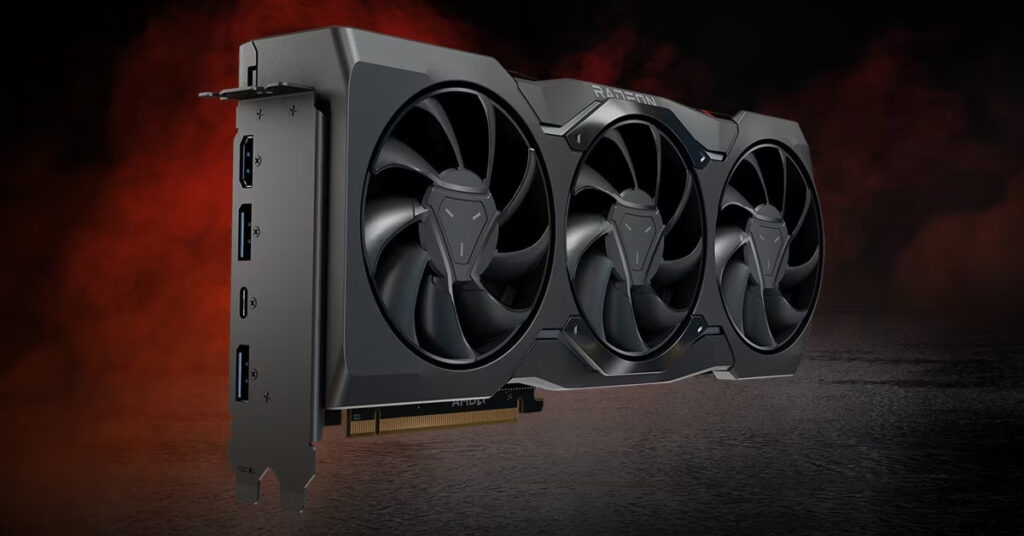
The Upscaling Benefit: FSR VS.DLSS
Upscaling technologies are featured on both GPUs: DLSS by Nvidia and FSR from AMD. These technologies are performance-safe points by first rendering the game at a lower resolution and then automatically upscaling it to your native resolution.
Our findings show that Nvidia’s DLSS usually boosts performance more significantly than AMD’s FSR and more so at higher resolutions of up to 4k.
For gamers out there who are looking for the highest performance level with the least compromise on the visual side, Nvidia’s DLSS technology might be the deciding factor.
Competitive Gaming: A Mixed Bag, AMD
High frame rates are the issue for many of the competitive gamers who look to AMD. While the 7900 XTX performs admirably in titles like Counter-Strike: In terms of CS: GO and Rainbow Six Siege, it seems to be lacking in Fortnite and Warzone.
These titles instead highlight optimization problems involved with AMD’s GPUs, which are responsible for the decline in the quality of the game and jerky movements, especially when using high-quality settings.
In this category, Nvidia seems to be ahead. However, you should put it on the spot for any driver updates from AMD that may improve the optimization of games.
Beyond the Benchmarks: Also to Be Considered
Even though benchmarks enable us to see performance metrics, the choice between the RX 7900 XTX and the RTX 4090 is not only about the numbers.
1. Software Ecosystem and Features: NVIDIA GPUs benefit from institutionalized software systems which include the NVENC tool for content creators and NVIDIA Broadcast for better communication. AMD is closing the gap but Nvidia still has an upper hand here.
2. Driver Optimization: As a result, both AMD and NVIDIA are constantly releasing updates of their drivers to improve performance and fix bugs. However, some users assert that they face more frequent driver-related problems with ATI than Nvidia cards.
3. Future-Proofing: Nvidia’s Tensor Cores, which also help DLSS and AI-powered upscaling, could become a key element in games of the future as well. If life span is the biggest concern, then this is probably a minor issue for the RTX 4090.
4. Power Consumption and Heat Generation: The RTX 4090 uses up a lot of power, will need a heavy-duty power supply, and will produce lots of heat. The 7900 XTX, being more power-efficient, is suitable for the environment, energy consumption, and heat dissipation of the system.
The Verdict: Vote Your Champ
Whether you put the RX 7900 XTX or RTX 4090 depends on your priorities and budget. For those who heavily value the raw power of a high-end card with the best-in-class ray tracing capabilities, the RTX 4090 rules the roost, however with a high cost attached.
The 7900 XTX outshines consumer-oriented models that are about fast frame rates in esports titles and usual rendering. Nevertheless, possible optimization problems of some well-known competitive games must be taken into account as well.
A lot of gamers still play in 1080p or 1440p resolution, so a 7900 XTX might be a great deal for them, however, gaming at 4K resolution with ray tracing is likely to attract gamers towards RTX 4090.
Finally, the right mix is entirely based on the games that you play, your budget, and the features that you find important.
Further Reading:
Directly in Your Inbox

